- Air Homepage
- Weather Equipment
- Weather Stations
Unravel the best observations from federal weather stations
What are the best weather stations? Observing stations run by the government. How come? They're funded to keep and use modern, reliable test equipment. There are devices like temperature recorders, humidity data loggers, wind speed instruments, and cloud information recorders.
METAR Aviation Weather Reports: Decode The Sky ✈️Pilots, air traffic controllers, and top meteorologists use a secret weather code to get the most accurate data? Discover how to decode the true story of wind speed, clouds layers, and temperature with the professional METAR aviation weather report format.
Search for more about weather.
Interested in official weather observations? Why? Teaching official weather observations enhances our critical thinking skills and encourages an appreciation of the natural world.
Weather is something we experience every day and can make sense of weather reports they hear on the news or read in apps by understanding official weather observations. They allow us to appreciate how meteorologists predict and understand weather.
Weather observations introduce readers to the scientific method and technology in data collections and instruments such as thermometers, anemometers, and rain gauges can be explored. Then we might analyze data for weather forecasting. People can learn about fascinating natural phenomena such as thunderstorms, hurricanes, tornadoes, and other extreme weather events through weather observations.
We explore climate change and its impact on the planet and ecosystems with the help of weather observations. Weather observations also help us recognize the importance of being prepared for different weather conditions such as storms, extreme temperatures, and other weather hazards.
Some of us might consider careers as meteorologists, climatologists, or environmental scientists. And engage in community-based programs which foster a sense of participation and responsibility for collecting valuable data. Info which contributes to scientific research. Finally, weather observations can be integrated into geography, mathematics, and even art (e.g., drawing weather maps). These different fields of study are interconnected.
Flight Weather Data and Air Quality Monitoring
Check out this weather stuff.
Flight weather data is provided by NOAA weather observation stations and similar national forecasting services around the world. Human lives depend on their knowledge.
There are extensive records and empirical data kept by weather stations, including past weather, climate data, and air quality data.
The Guinness Book of World Records sometimes publishes weather data. It's often used to calibrate aircraft instruments.
If air quality is a concern to you, I've got a description of a monitoring system used by industry. Pollution releases are monitored based on physical conditions, which can change depending on the weather. You can read about it here.
What do official observations look like?
Hold on, this can get a little technical. METAR stands for METeorological Aviation Report. Weather stations send one line of encoded weather info.
If it's a special non-routine report, they call it SPECI. It's used for sudden significant weather changes.
Forecasts are called Terminal Aerodrome Forecasts or TAFs.
A METAR is a weather observation encoded in a special language. According to ICAO, the International Civil Aviation Organization, the format has become the world standard for weather stations.
Find your nearest airport four letter code, for example KLAX for Los Angeles Airport, for the latest observations. If you need your airport weather station code, use this webpage. Enter the city name and hit submit. After the initials ICAO, find the 4-letter code.
You'll get a list of several airports and stations for big cities and two-word city names. Then go to this government page and type that code in.
There's a good one good one for Canadian locations. Here are the last three METAR weather observations and TAF weather forecasts. If you don't know the airport code, you can type in the city name.
Below are details on how to read these aviation weather codes.
Experienced the cold?
Everybody knows Canada is cold. Always. What do you think?
This country never has summer. Or does it?
Ever been to Canada? Or some other northern place? Russia? Sweden? Alaska?
Antarctica??
Was it a shock?
Other cold weather examples
Look here to see contributions from other visitors to this page...
Not What I expected 




The first time I went to Charlotte, NC in January it was 70 degrees!
Now, they have snow and ice just like we do in New England!
Barry's Response …
Sweden Snowboarding 




It was great, we went snowboarding in Hemavan and was a great adventure holiday with 2 other friends. I did not feel the cold much wearing the ski jacket …
nav canada weather 




How do I read an upper wind report from Nav Canada weather web site?
Barry's Response - Greg: Yeah, that's a good question. From what I understand, …
Not always Cold in Canada 



I live in northern Indiana and went fishing up to Vancouver Island in June and found the weather to be very pleasant. Later I visited in January and while …
Weather Stations 



I regularly check the weather. I have never heard of these terms before. But I do check the weather regularly. The site i use is the weather network. …
Changing Canadian Situation 



There are not many government observing stations left in our changing Canadian situation. I am a flight service specialist with NAV CANADA. NAV CANADA …
Cool but not cold 


I have experienced cold, but not the true, bone-deep, cold of a Canadian winter. I lived on a boat in London for a year, and although people always say …
cold Not rated yet
No idea...have been at 60 below and was cold, so let me know if colder.
Barry's Response - Well Mr. Clyde. You've got me beat. I'm from Alberta. …
Canadian Weather Not rated yet
Canada is a country of weather extremes. I live in Canada; I currently live in Ontario, but I have also lived in British Columbia.
The winters are …
canada Not rated yet
I have been to Canada many times. It is really cold in winter. Colds are very common there. That's why you have to dress really warm. In the summer it …
Weather stations Not rated yet
A weather station is used to find temperature recorders, humidity data loggers, wind speed instruments and devices for cloud information records.
…
Data History Weather
#19
So how do you read these things? I'll give you an example:
KJFK 242151Z 15009KT 10SM CLR 09/01 A3006 RMK AO2 SLP180 T00940006
Weather stations decoded
Ok, here's the breakdown:
KJFK is the airport code for John F. Kennedy Airport in New York City. It has to be one of the most reliable weather stations because of how much air traffic they get.
242151Z - 24th day of the month, the month and year are not included in the METAR. Data was recorded at 21:51 coordinated universal time, which is 4:51 pm New York time, Eastern Standard Time, EST.
15009KT - Wind blowing from 150°, southeast, at 09 knots. An uppercase G followed by a number means gusts, bursts of stronger wind, whose speed is given in knots.
Airport wind socks or anemometers combined with weather vanes can tell you the speed and direction.
10SM - Visibility in statute miles. If visibility is bad, there might be fractions. The value of 10 miles shown here is pretty good. For each runway, visibility can also be measured in feet if it's bad.
CLR - No cloud sky. Fog is FG, rain is RA, light snow is -SN, heavy showers are +SH. These are the main codes, but there are dozens more.
If there are clouds, the coverage codes are BKN for broken, OVC for overcast, FEW, and SCT for scattered. In each of these codes, VV indicates the highest point the observer can see, followed by the height in feet. We could see BKN040 as broken clouds 4000 feet high.
They'll report all the cloud layers starting with the lowest one if there are several.
09/01 - gives us
Temperature and Dew Point in degrees centigrade, aka Celsius. A capital M for minus means below freezing. Fahrenheit temperatures are calculated by adding 40, dividing by 5, multiplying by 9, and then subtracting 40.
A3006 -
Altimeter setting, for pilots. If you're flying a plane and leaving at this time, set it to 30.06 inches of mercury.
RMK AO2 - RMK means remarks, they may talk about recent weather, cloud types such as CB for cloud cumulonimbus, etc. The manned stations have this feature, the automated stations can't.
The wind shear is a real problem for pilots. Shear is recorded here if it's present. There's a special code called AO2 that's used by NOAA weather stations.
SLP180 -
Pressure. Adjusted for Sea Level. Divide the number by 10 and add 900. If it's less than 500, divide by 10 and add 1000 to get millibars. Divide by 10 to get kiloPascals, or 33.8653 to get inches of mercury. That'll require a calculator.
T00940006 -
Can be ignored, not used by all countries.
Official weather stations provide this kind of flight weather data. This is how the code looks on a surface analysis map.
Go back from Weather Stations to the Weather Equipment page now.
Search this site for more information now.
How can you tell what weather observations are reliable?
Who runs the best weather stations? Monitoring the air is an area where government excels. Count on it.
Have your Say
Been to Canada? Live here? I'll bet you have a good weather incident or two to tell us...Go ahead: Have your Say - see how cold you can make us.
You can even comment on what other people have said...no registration or login required.
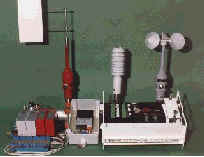





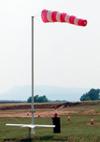

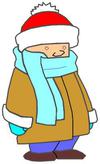


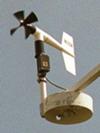

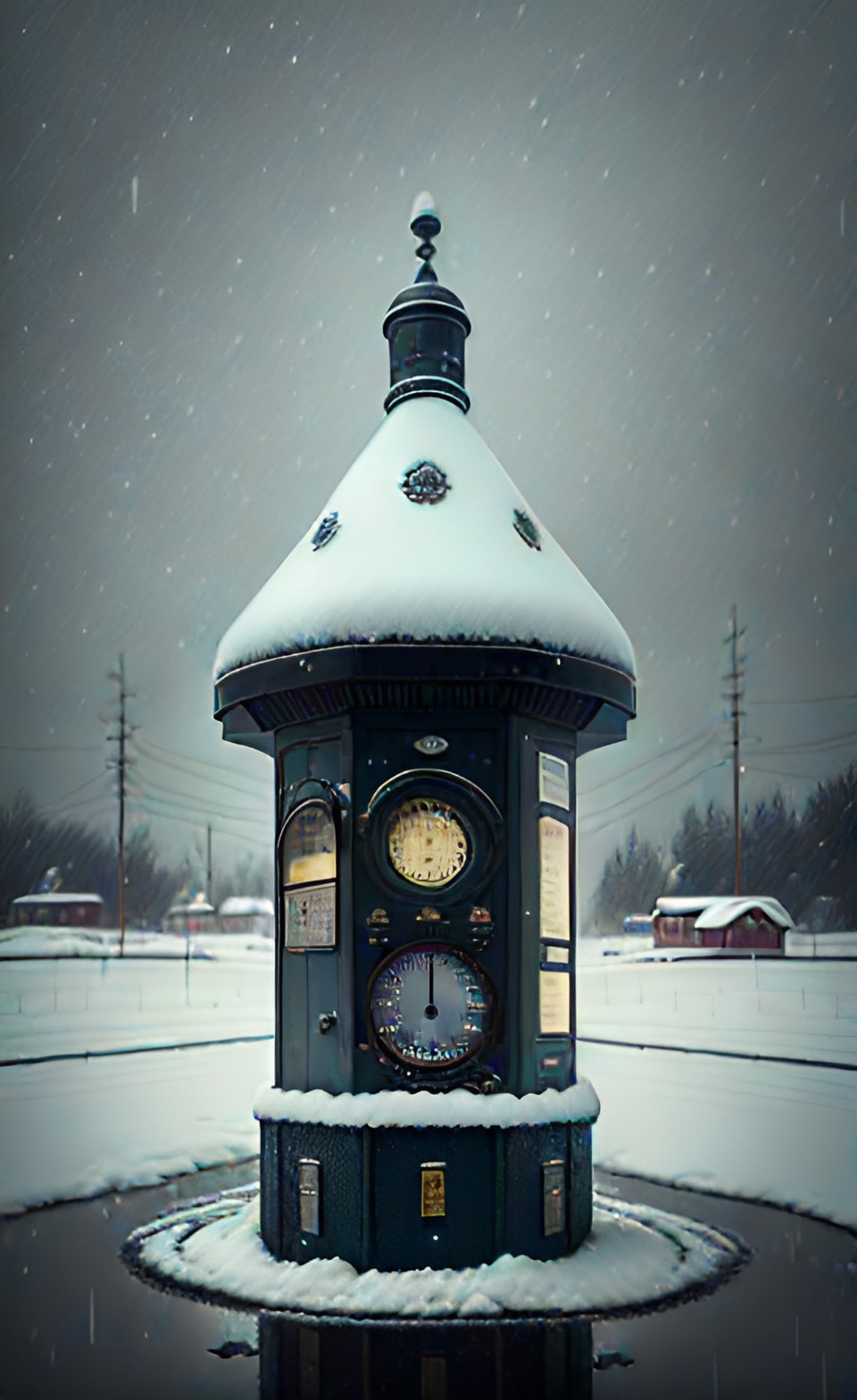
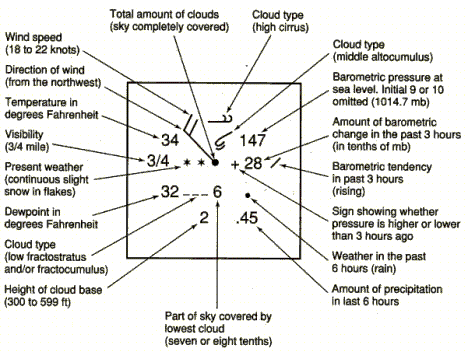


New! Comments
Do you like what you see here? Please let us know in the box below.